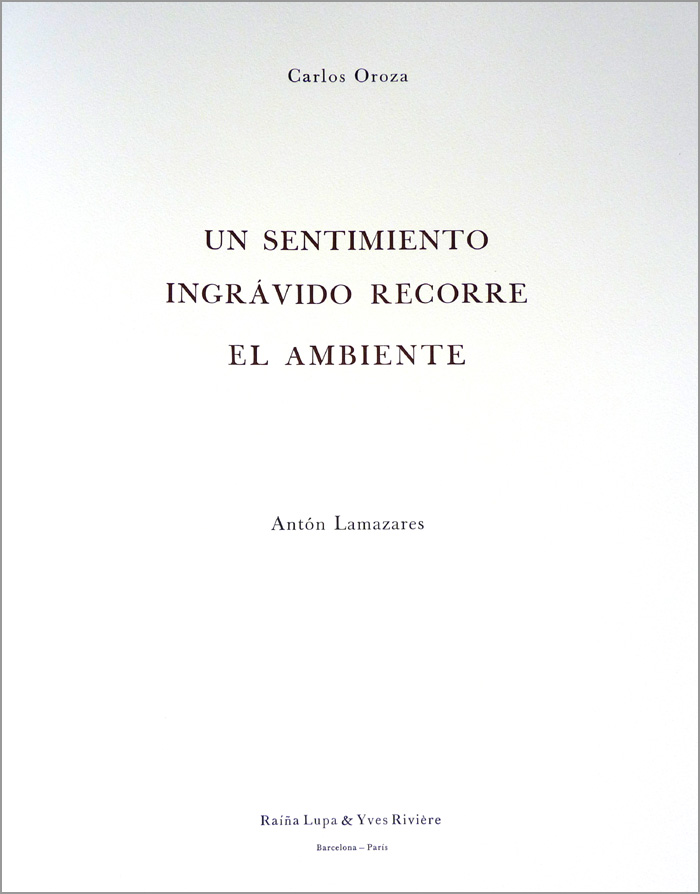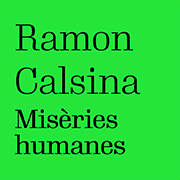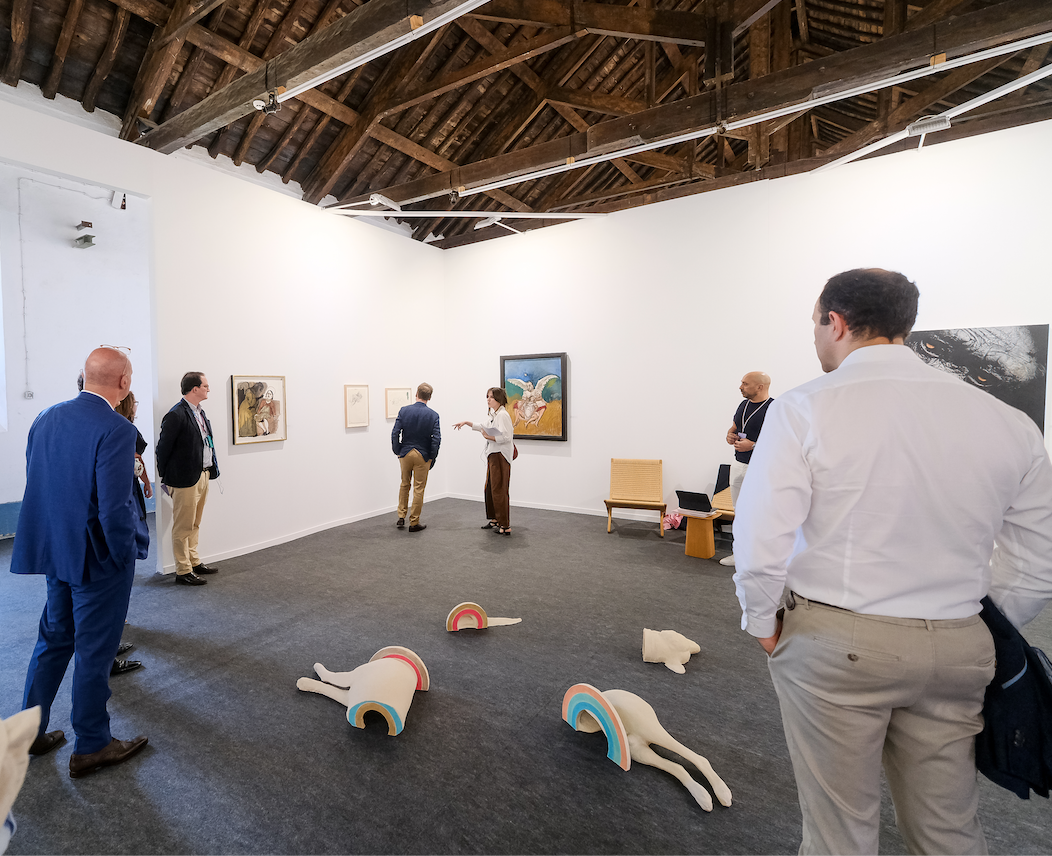Opinion
Ars libris: Antón Lamazares and Carlos Oroza

Coinciding with the Barcelona Gallery Weekend, I attended a talk/inauguration of the exhibition by Antón Lamazares at the Rocío SantaCruz Gallery's open house: Night that never ends. This title and its poetic resonance suggest to me that true art and books are neither ancient nor modern, that the time of creation can be an endless night that only ends with death or perhaps beyond.
Gloria Moure, Rocío Santa Cruz and the artist participated in the conversation. Lamazares made some relevant observations that help us understand the decade of the nineties and also his personal drift towards the world of artist's books. He reminded us that twenty-nine years ago Gloria Moure commissioned him for the Galician Contemporary Art Center, of which she was director. He also confessed to us that in Gloria Moure's time the activity and presence of artists from around the world was so great that he was on the verge of giving up his studies in New York, Berlin or Madrid to return to his homeland, in Santiago, since the effervescence that the director had created between December 1994 and 1998 attracted the best international artists of the moment. Then came Barcelona and Miguel Marcos' trust in him and the new Galician figuration together with: Lamas, Leiro, Patiño.
We were a generation full of paradoxes and contradictions that made some of us join the new postmodern condition in my case from the pages of La Vanguardia. Certainly, we see the years gone by that the night does not end because the demand for what was called the return to painting still continues.
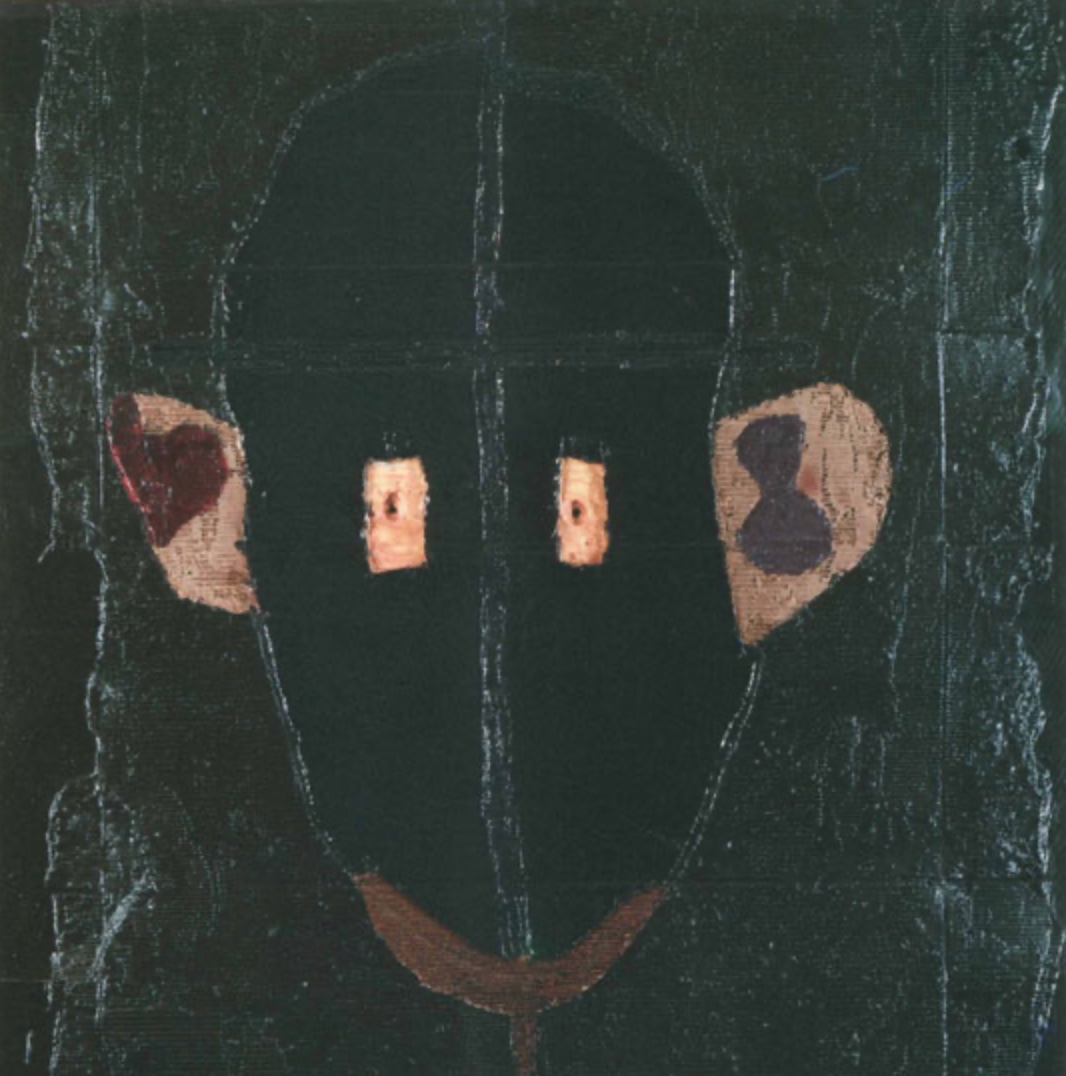 Eu, sèrie Canella Min, Antón Lamazares (1985)
Eu, sèrie Canella Min, Antón Lamazares (1985)
Lamazares confessed to us in the open-air talk what is contained in his autobiography, which is that having been born in Maceira, a village in Lalín in Pontevedra, the rural Galician environment of his childhood and adolescence left a deep mark on his imagination and his creative process. An incipient religious vocation due in large part to his studies at the boarding school of the Franciscan convent of San Antonio de Herbón, between 1964 and 1969; during these years he devoted himself to the fervent reading of literary texts, especially the Greco-Latin classics. At the end of the sixties he began to write poetry and decided that he wanted to dedicate himself to literature. It was not to be, but the murmur of the word persists in his painting. This makes me think of the possible relevance of a book in the painter's ideology, I am referring to the Actus Beati Francisci et sociorum eius, better known as the Florecillas de San Francisco published between 1327 and 1337. In this Franciscan atmosphere in 2014, Gloria Moure returned to Galicia with the exhibition On the road that commemorates the eighth centenary of the pilgrimage of Saint Francis of Assisi to Compostela. The exhibition showed 44 works by 35 artists, including Antón Lamazares. I will leave the relevance of Franciscan training in the work of this artist for another occasion.
Anton Lamazares' interest in letters and poetry is well known, since he has not only made series about poets such as that of Sant Joan de la Creu, or an artistic project of the painter inspired by the poetry of Uxío Novoneyra, but throughout his entire work he has incorporated textuality into the canvas, even not by putting letters, but by intervening in the canvas by perforating it as in the series Inda of 2011, in Canela Min, in the series Letania of 1989 you can already see the attempt to convert textuality into painting "estoi serrado voi pal sirco". This desire to intervene within the painting led him towards 2012 to the invention of a cryptic language called Delfin, a series that he exhibited at the Circulo de Bellas Artes in Madrid and at the Centro Cultural de España in Mexico.
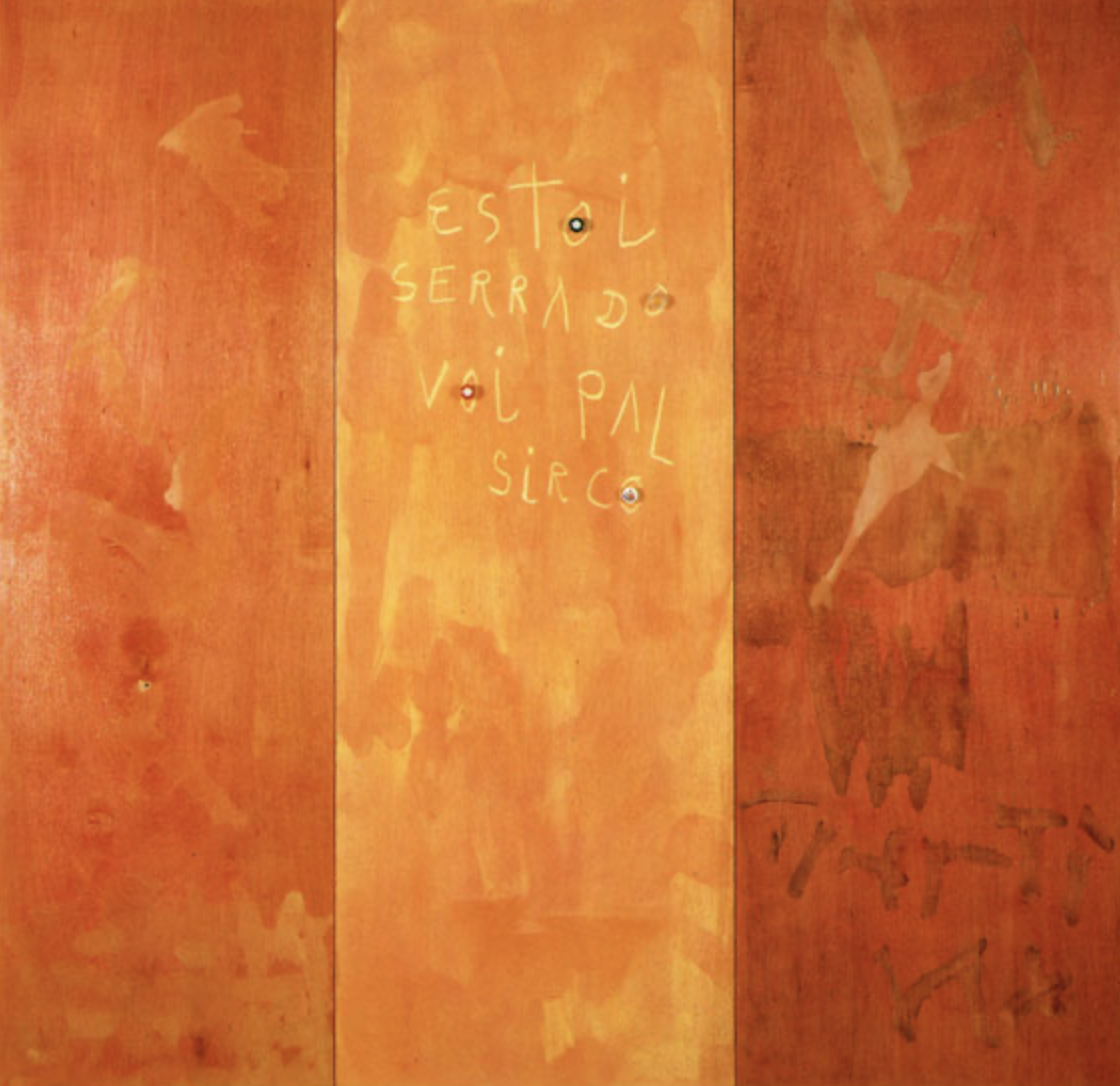 Estoi serrado voi pal sirco, sèrie Letania, Antón Lamazares (1989)
Estoi serrado voi pal sirco, sèrie Letania, Antón Lamazares (1989)
Lamazares' first collaboration with Rocio Santa Cruz took place in Paris in 1994 with the first exhibition at Raiña Lupa. And then with the book Itinerarium in 1999 on a text written by Egeria, the traveling nun of the 4th century, with an original Latin text translated into Spanish, French and Galician and six numbered and signed lithographs by Antón Lamazares. In 2006, Lamazares and the poet Carlos Oroza made the book Un sentimiento ingrávido recorre el ambiente for this Gallery, a jewel that normally remains in the art collection and that we can now browse on a unique occasion on the occasion of its exhibition of paintings. The book is large format (50.7x67cm) and edited by Raiña Lupa and Yves Rivière. An edition of 85 numbered and signed copies with manual typography that contains five lithographs by the artist, accompanied by unpublished poems by Carlos Oroza and a prologue by César Antonio Molina.
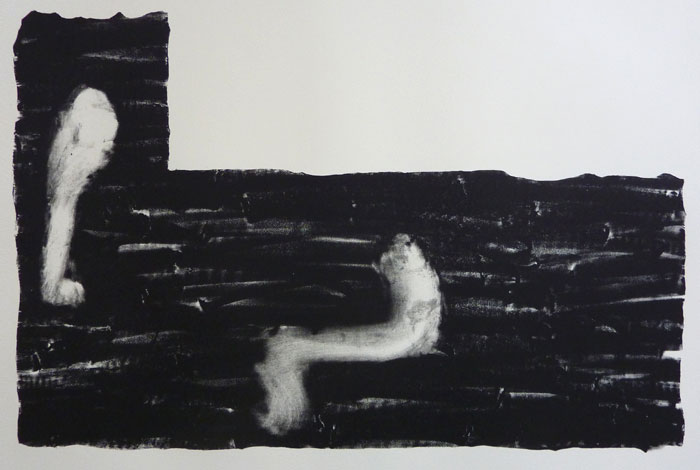 Litografia d'Antón Lamazares a 'Un sentimiento ingrávido recorre el ambiente'. Raiña Lupa
Litografia d'Antón Lamazares a 'Un sentimiento ingrávido recorre el ambiente'. Raiña Lupa
"A weightless feeling runs through the atmosphere" is a verse by the poet Carlos Oroza that is found in Blanquísima preséncia one of the parts of this whole that collects his complete work under the name of Evame. The power of this poet considered the "damned" of his generation made Luis Eduardo Aute pay attention to it and sing this same poem in 2018 in a magnificent version, a true tribute to this poet of powerful presence. His hypnotic force made his admirers follow him with fervent enthusiasm, as can be verified by Rocío Santa Cruz herself who met him, and who told me that the spell of this poet was so powerful that once she saw him leave the stage, go down to the stalls and immediately began to walk towards the outside of the hall while the audience, behind him, followed him fascinated.
Finally, we can confirm that it is true that “the night does not end” because the poet Carlos Oroza has been lucky that fate has done him poetic justice and has guaranteed continuity with his daughter Marina Oroza. Recently, he has published his book Decir and of which Victor Obiols has written "it is the most important book published in 2024 in Hispanic poetry". Obiols tells us that "it is a testimony and sublimation in verse of a story of abandonment and reunion, with an epilogue in surgical prose where we find the story of the lived experience". A true ironic twist, I would almost say karmic, of fate, because father and daughter practically did not know each other and, despite this, Marina Oroza possesses the same magic and performative-poetic fascination as her father.
